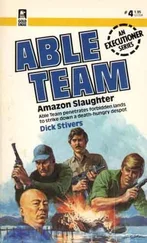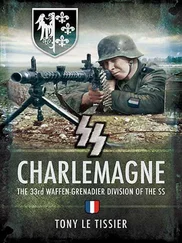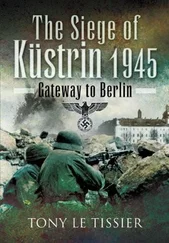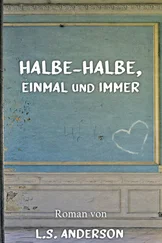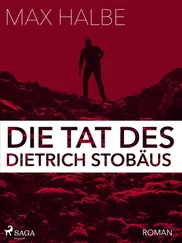The Soviets saw to their own dead, with few exceptions avoiding the use of German cemeteries on ideological grounds. Instead they usually established their own cemeteries in the centre of villages or other prominent sites. The Soviet cemetery on Reichsstrasse 96 on the northern outskirts of Baruth was officially established on 7 November 1947 and contains some 1,300 of their dead in 22 mass graves, mainly men from 3rd Guards Tank Army, but these are by no means all the Soviet troops who died in the area.
The vast war cemetery at Halbe, the Waldfriedhof, or Woodland Cemetery, as it is discreetly known, came about as a result of the efforts of Pastor Ernst Teichmann and his wife. Upon his return from the war, during which he had been a padre with the Wehrmacht, Pastor Teichmann took over a parish in the Harz Mountains, where he started concerning himself with the graves of the war dead to be found there. He first heard about Halbe in 1947 and went to see for himself. At about the same time Berlin’s Bishop Dibelius managed to establish an Evangelical Church commission for the care of war graves in both halves of the city. Although the Volkssbund Deutsche Kriegsgräberfürsorge (German War Graves Commission) was anxious to assist, it had no authority in East Germany, and could only provide support from behind the scenes. Then, on 29 July 1948, a war graves commission was established for the state of Brandenburg when the Soviet Military Administration passed the responsibility for this matter to the civilian authorities, ordering all identifications to be passed on to the German Red Cross in West Berlin for registration.
Pastor Teichmann applied and was accepted for the post of parish priest at Halbe in 1951 and eventually the Waldfriedhof was laid out in accordance with his recommendations. Meanwhile, despite the indifference and even hostility of the East German authorities, Teichmann and his wife, with the help of some members of the community, applied themselves assiduously to the task of identifying and reinterring the war dead from the area with reverence and care. He continued this work until his death in 1983. By the end of 1958 the official record showed 19,178 reinterred, and by the end of 1989 this had risen to 20,222 bodies, of which some 8,000 had been identified.
Not all the war dead came from the immediate vicinity, for East German expansion of open-cast coal mining in the Lausitz area resulted in most of the war dead from that area being transferred to Halbe. Remains are still being discovered at a rate of about 200 per year to add to the cemetery’s total. It also contains the remains of some 4,500 prisoners who died in the Soviet ‘Special Camp No. 5’ in Ketschendorf, near Fürstenwalde, during the period 1945–7. The Waldfriedhof is the largest military cemetery on German soil. [8] Mihan article to author; Jörg Mückler in Deutsches Soldatenjahrbuch 2000–2001.
The search for missing persons became a major task in post-war Germany, and few enquirers would be fortunate enough to receive such detailed information regarding the fate of a missing daughter, as was given in this letter written by a soldier four months later:
Meanwhile the Russians had surrounded the pocket that we wanted to escape from and we no longer had the slightest peace. We reached the Hammer–Halbe area in stages. I took your daughter, along with six other refugees, to just short of Hammer, where she could wait out the development of the overall situation herself. She returned that night to the place where we were parked, because Hammer was under fire and the cellars there were all full. Towards morning on 28 April we came under heavy mortar fire so withdrew further into the woods. With dawn all hell broke out from all sides. The first barrage went over us as we lay in a slit trench. At about 0840 hours there was another barrage during which a bomb from a heavy mortar hit a tree behind our trench and we were unlucky enough to have all the splinters shower down directly on our trench. I felt a piercing pain in my left shoulder and said to your daughter: ‘I’ve had it.’ Then I noticed that Traudel had started crying, and so had your daughter.
At first it looked like the effects of shock, until your daughter started groaning. The whole thing only lasted seconds. When I heard your daughter’s breathing, I realised what was wrong. Three large splinters had pierced her back and the air was coming out of her wounds. Comrades sitting in a hole nearby immediately took Traudel to the dressing station that was close by, as she had a small wound in her leg, while I attended to your daughter as far as my wound would let me. As she had lost consciousness immediately after being wounded, I could not communicate with her. Death followed very quickly, as the medical officer who had been summoned confirmed. We then buried your daughter in the trench in which she had so quickly met her fate.
I then went to the main dressing station to look for Traudel and get my wound dressed. I found Traudel there and took her with me to find transport. However, the artillery and mortar fire was so heavy that no transport was possible and we had to spend the whole day sitting in a foxhole. Then, at about 1900 hours that evening, we were taken to the Hammer forestry office. At the same time the Russians attacked us from the rear and we had no choice but to break out to the front.
The wounded who were unable to move remained lying where they were. My wound had become worse in that I now had fever and was shivering. I carried Traudel with my good arm about three kilometres towards Halbe, but my shoulder wound began bleeding from the effort and I lost so much blood that I could not go any further. Some comrades took Traudel on by vehicle to Halbe.
The whole break-out area lay under a frightful hail of fire such as I had never ever experienced before throughout the war. When I reach Halbe several hours later, it was no longer possible to get through. All the streets were jammed with shot-up and burning vehicles. While looking for Traudel at the many wounded collection points, I was wounded again by a shell exploding three metres away from me, getting splinters in the left knee and thigh. With the help of a comrade, I was able to slip into the cellar of the nearest house, where civilians bandaged me. I lay down there and was found by the Russians when they took the village during the course of the evening. A Russian officer had me immediately bandaged by a Russian medical orderly and came back two hours later with a German doctor and two stretcher bearers, who took me to the dressing station. My enquiries about Traudel were unfortunately unsuccessful. Traudel wore a small label with her Cottbus address on it under her coat, as I saw myself. Hopefully she has found her way to you in the meantime.
The whole episode in the Halbe area from 26 to 30 April was a catastrophe. From the 140,000 men who were in the pocket, more than 20,000 were killed and 10,000 wounded.
The fate of Frau Buhlmann and your Traudel has had the same effect on me as if they were my nearest kin. And during the few hours that I sat together with Traudel in the foxhole, I grew as close to the child as if she had been mine. [9] Halbe mahnt…! 1963 pamphlet, pp. 13–14.
But what happened thereafter to the principal protagonists in this drama?
General Busse (full name Ernst Hermann August Theodor Busse) was released by the Americans in 1947, and from 1950 until 1965 served as the principal adviser on Civil Defence to the Federal German Ministry of the Interior, [10] The author was informed by another general present that Busse was given a very stony reception when he gave an address on Civil Defence to the Bundeswehr Senior Staff College at Hamburg after the war.
for which he was awarded the Gross Verdienstkreuz mit Stern upon his retirement. He died at the age of 89 at Wallerstein in Bavaria on 21 October 1986.
Читать дальше

